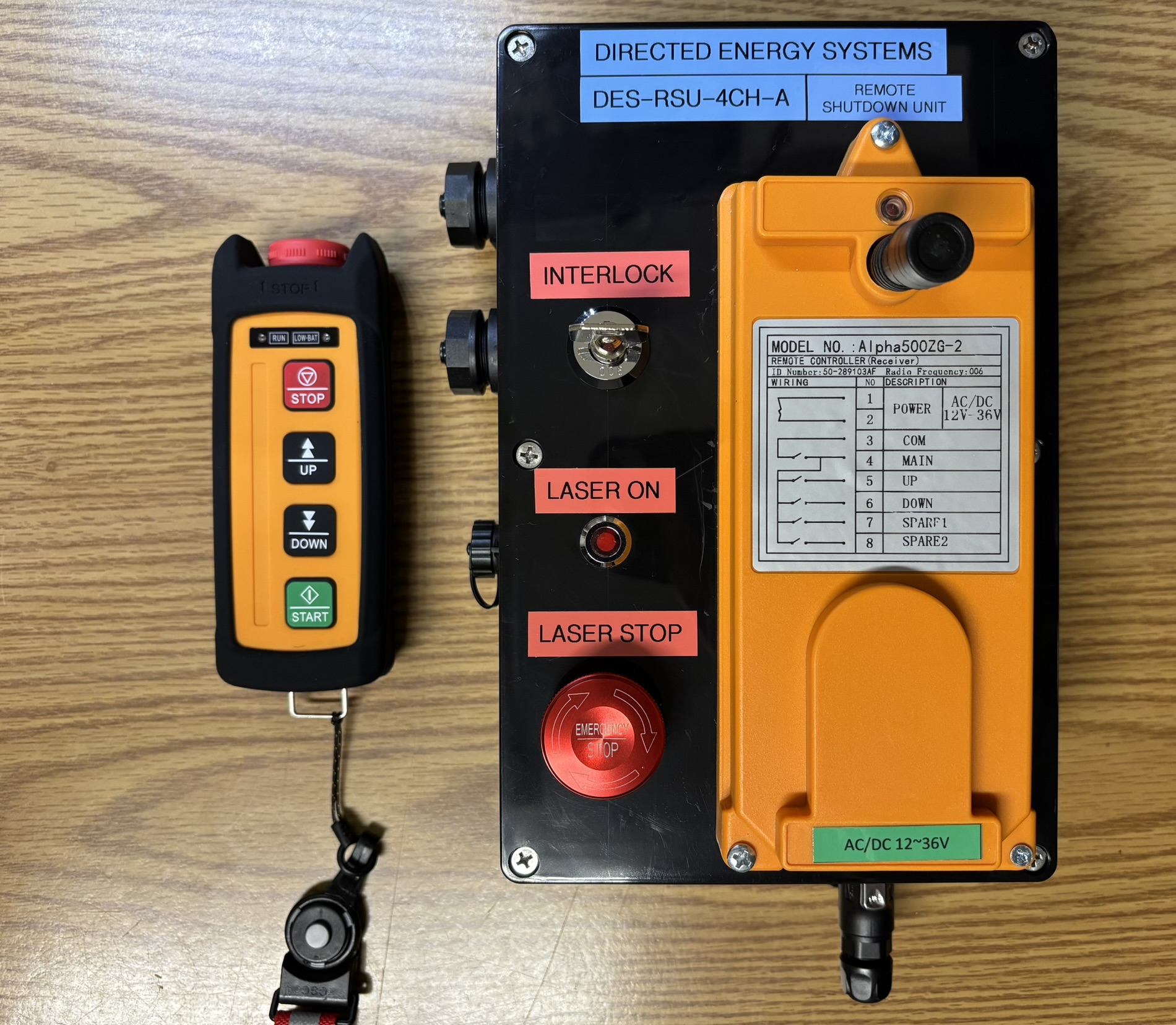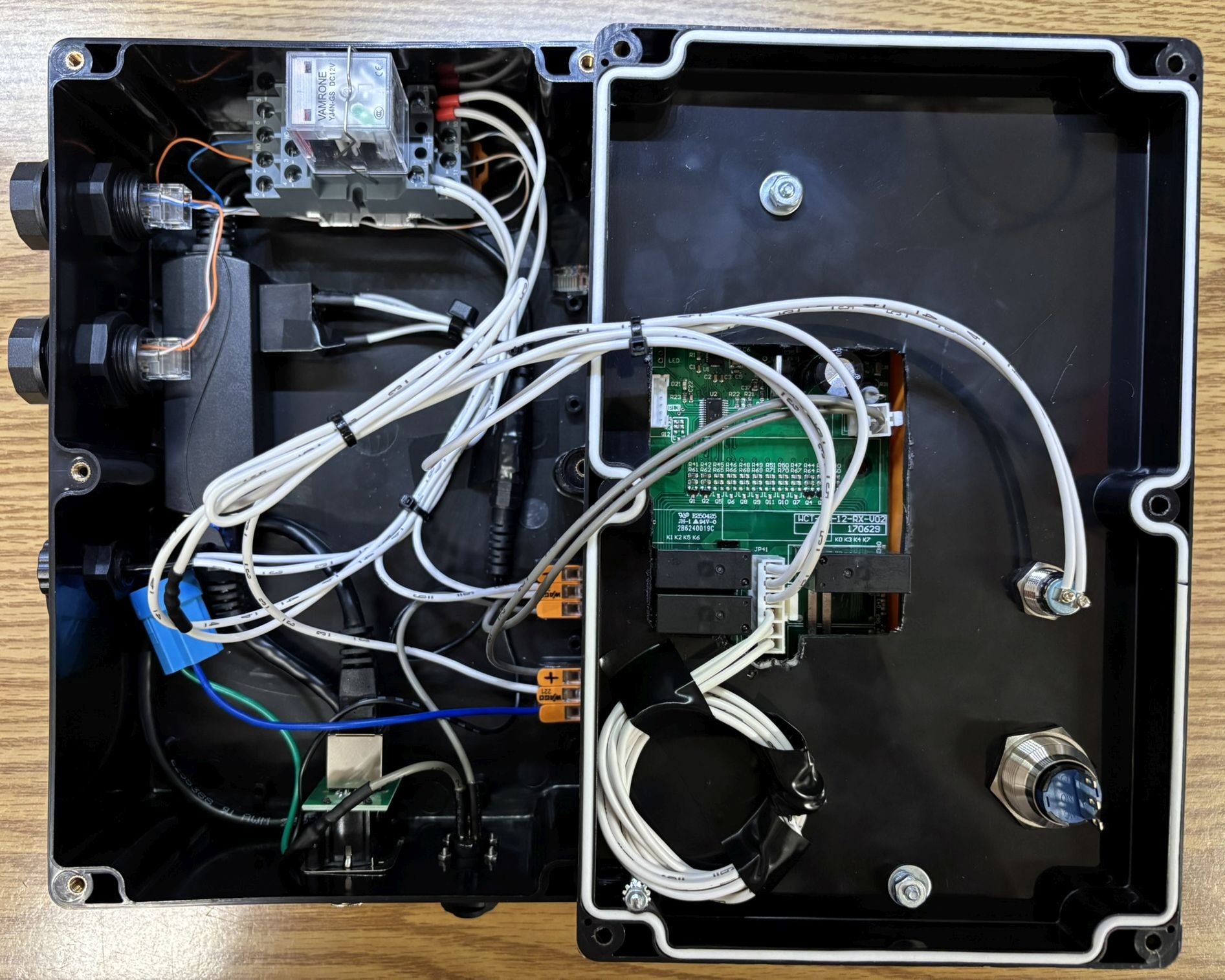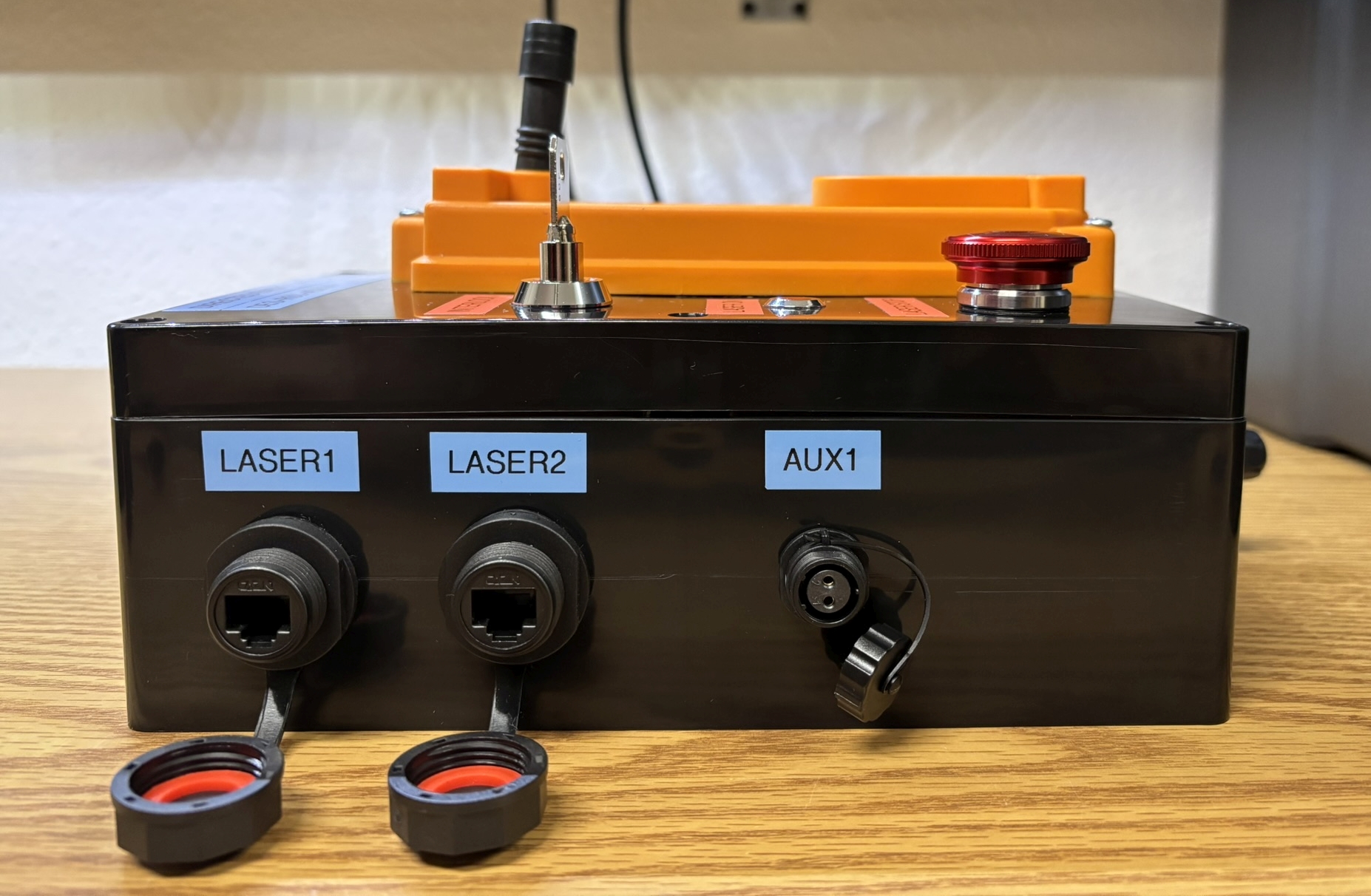Directed Energy Systems has come up with a unique solution to a very common problem in the show/entertainment laser industry. Most show lasers are class 4 or higher, and are capable of producing intense beams of coherent light. If the beam is not controlled properly, direct exposure can cause blindness and burns. Safety is important when working with any laser system, but even more important when operating high energy lasers outside of a controlled lab setting. There are various laser safety requirements, but we are going to focus on one in particular. The need to remotely shut down all lasers in case of an emergency. Commercially available show lasers are required to have several safety interlocks built in to ensure laser output can be disabled when needed. An external interlock is one required, but often overlooked safety feature. When using one or multiple show lasers, they are often located high up or out of reach, making it challenging to access the key or power switch to turn the laser off in an emergency. Also, sending someone around to the lasers individually would take too long. Sure, you could put them all on a common power circuit and cut power to that entire circuit if needed, but there is a better way. The external interlock of a show laser is (almost always) a low-voltage/logic-level signal that is designed so that a complete circuit enables the laser, and a broken circuit disables the laser. You will frequently see interlock "plugs" or jumpers which just bridge two or more pins of the external interlock connection, enabling the laser. We designed a system to take advantage of this safety feature and actually make it useful! Introducing the Remote Laser Shutdown Unit from Directed Energy Systems! This product is a low-cost solution that enables the immediate shutdown of all connected show lasers. It can be activated locally with the red push button or remotely using the handheld controller. There are plenty of show laser e-stop and interlock matrix devices out there, but none seem to offer a truly remote (wireless) actuation method. Additionally, they usually require proprietary cables or connectors. Some use XLR, which is fine, but we have come up with an even more convenient solution: Ethernet. Yes, our controller and FENRIR series show projectors use RJ-45 (Ethernet) connectors for the external interlock. Don't worry, there is no networking going on. We chose it because it's cheap, reliable, common, and easy to work with. You can use any quality Ethernet cable (or make your own) and connect one end to the show projector, and the other to the remote shutdown unit. No expensive XLR cables needed! CAT5e (Ethernet) cable is super cheap, easy to terminate, and can be found pretty much everywhere. It's trusted for critical networks all over the world, and proper CAT5e/CAT6 cable is suitable for PoE power delivery, making it more than capable of handing a low-voltage/logic-level interlock circuit. The handheld remote enables spotters or event staff to easily shut down all connected laser show projectors with the push of a button.

The remote shutdown unit was designed to be flexible, and can be powered via a 12V DC input, or via PoE. If you're not familiar with PoE, it's a stable and convenient way to deliver up to 48 volts of DC power over a suitable Ethernet cable. Some installations may already have PoE available, so we included it as an option for powering the controller. It's important to note that PoE operates independently from actual computer networking over Ethernet. The RSU is not a network device and has no ability to communicate on a TCP/IP network, it just has the ability to power itself from a suitable PoE source.

For connecting to laser show projectors, we chose RJ-45 (Ethernet) as mentioned earlier. However, there is no reason why an RJ-45 to XLR/DB9/etc adapter could not be made to enable the RSU to be used with laser show projectors from other manufacturers. It could even be as simple as switching out the connectors with something else such as XLR. You would just need to ensure the interlock signal is nothing more than a make/break low voltage circuit, and determine the pin-out for the system in question. The RSU uses a dry-contact relay to individually break the interlock circuit for each show projector. The interlock circuits are completely isolated from one another, so using different makes and models of show projectors on a single RSU is not an issue. This version of the RSU supports 2 show lasers, but future versions could support many more! In fact, the relay inside has 4 channels so we could easily add 2 additional RJ-45 connectors for more lasers if needed. The AUX1 connector is a dry contact, momentary output that is activated when the UP button on the remote is pressed. The two pins are isolated from the rest of the system and bridged together to complete a circuit when the AUX function is activated. This is useful for connecting other accessories, such as the manual trigger input of a fog machine. Future versions of the RSU can include more AUX outputs as well.

The remote portion of the RSU is based off of a "wireless crane remote control module". These are originally intended to be integrated into the control panels of industrial cranes or hoists to enable convenient remote operation. We chose this solution as they are intended for industrial settings and quite durable. Also, it's going to be a bit more reliable of a device based on the intended use case. Any remote controlled relay could technically accomplish the same task, but for a safety-critical system we wanted to use a more robust remote control module. As mentioned earlier, the system can be powered directly by the 12 V DC input connector, or via PoE, which feeds into a PoE splitter module. A 4-channel relay is used to switch the interlock circuits along with a separate relay for the AUX1 connector. Other than some connectors, switches, and LEDs, that's pretty much it. The RSU is designed to be a simple and customizable device.